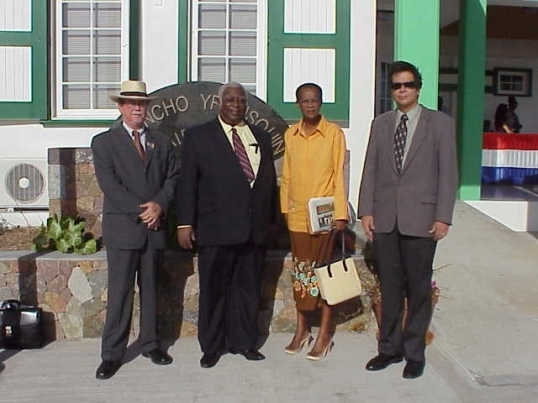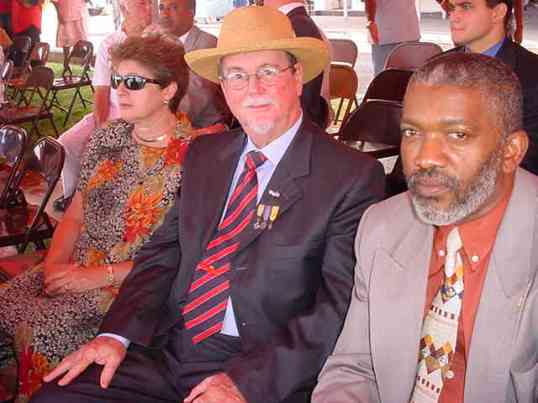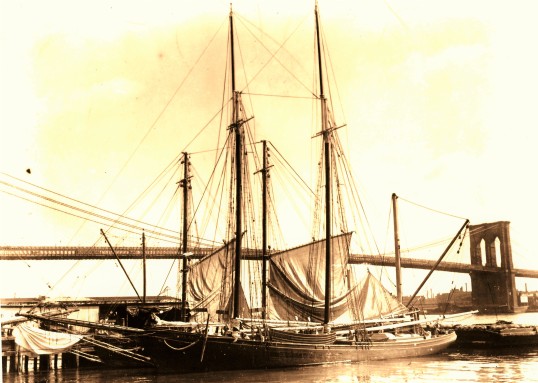Tribute to Sir Cuthbert Montraville Sebastian

Left to right. Prime Minister Dr. Denzill Douglas, Governor- General Sir Cuthbert Sebastian and Commissioner Will Johnson at a ceremony in the Federation of St. Kitts and Nevis.
TRIBUTE TO SIR CUTHBERT MONTRAVILLE SEBASTIAN.
By; Will Johnson
A great man has departed from our region. He was a Prince among men.
When I was once again Commissioner in the Period from 1999 to 2007 I conducted my own foreign affairs. Whenever I was invited to a meeting of the O.E.C.S. Ministers of Tourism I would make sure and attend. The last meeting I was at in Grenada I got a standing ovation from the other Ministers as it turned out that I was the only one who had attended all the meetings whereas some of the real members had not attended all.
In our now status Saba is isolated from our neighbors and the region. We are no longer addressed in our native language English and there seems to be no authority which we can complain to.
With St. Kitts and Nevis after 1999 we established a special relationship and we were invited to a number of events. The same goes from our side. We invited the dignitaries from the Federation to come to Saba. On more than one occasion the authorities there loaned us their defense force band to come to Saba and give luster to the Saba Day celebrations. Many people tell me they miss the ceremonies with the defense force band parading in the village of Windward Side and The Bottom on Saba Day.
Around 2000 the Government of Saba and St. Eustatius formed a delegation to meet with the authorities on St. Kitts to renew the ties which had existed in former times. From St. Eustatius we had Senator Clyde van Putten and Commissioner Brown and from Saba I was there in my

Governor General Sir Cuthbert Sebastian here visiting Saba.
capacity of Commissioner with Dave Levenstone as my aide de camp.
During that visit we also had the pleasure to meet formally with Governor General Sir Cuthbert Sebastian at the home of the Governor. As a Senator and ‘formateur’ of one of the National Governments of the Netherlands Antilles, I had many formal meetings with various Governors of the Dutch islands in the palace on Curacao. I was surprised that the same protocol was observed at the home of the Governor-General on St. Kitts as that on Curacao.
We were also invited to attend a reception hosted by Prime Minister Dr. Denzill Douglas. When I introduced Dave Levenstone to the Governor-General he introduced himself as ‘Levenstone’. I told him ‘Dave man give Sir Cuthbert your St. Kitts name. The moment he did so, Sir Cuthbert without hesitation exclaimed;’ Oh so you are from ‘Monkey Hill’. I told the Governor-General ‘Lord why did I not know that before, this man just ran against me in the elections on Saba and I would have had a field day with ‘Monkey Hill’. In later years I did have occasion to refer to Dave’s politics as those of ‘Monkey Hill’.
At the dedication of the new terminal building on Saba we had the honour of Sir Cuthbert Sebastian joining us here on Saba and for the Saba Day celebrations as well. He was accompanied by Members of the St. Kitts/Nevis defense force on that occasion.

Here at the opening of the new wing of the hospital on St. Kitts. The funds were donated by the Dutch Government and the Master of Ceremonies thought we were there representing the Dutch Government. I told them Holland has plenty money, ask for anything you want. Joking of course!
I had been invited by the Government of Prime Minister Dr. Denzill Douglas to witness the arrival of the first direct flight to St. Kitts from Atlanta. I accompanied Sir Cuthbert and his aide de camp back to St. Kitts. He informed me that I was to accompany him in his limousine. He was accompanied by a Police Escort and he had them take me to the Marriott Hotel. He informed me that he would be back at 2pm to pick me up. I was waiting on him. A number of tourists had seen me all dressed up and must have wondered who I was and where I was going. Imagine their surprise when the Police escort and Sir Cuthbert in his Rolls Royce pulled up. As I went down the steps one of the Policemen was there to open the door and see that I was properly seated alongside His Excellency.
As we were entering the airport premises a large number of young students were greeting us as we passed by. Because he was in his military uniform I believe that the students must have thought that it was I who was the Governor-General by the enthusiastic way they were waving at my side of the limousine. I thought to myself; Isn’t this a privilege for a small island politician?’

Delegation from Saba and St. Eustatius on an official visit to the Federation of St. Kitts and Nevis.
We were on friendly enough terms for Sir Cuthbert to confess to me that he had broken his oath as a doctor once and had lied to a patient. He asked me to find out for him who the man was. He told me that the patient had been brought to Cunningham Hospital with a burst appendix. However coming to St. Kitts with the ‘Blue Peter’ had taken so long that there was no hope of survival for the man. Dr. Cuthbert told me that the young man pleaded with him and told him that he had a wife and two small children on Saba and to tell him that he was not going to die. Dr. Cuthbert realizing that it made no sense to tell him the truth reassured him that he was not going to die, and within minutes Gerald Hassell smiled and turned over and died. I was able to get the information on Gerald these many years later and Dr. Cuthbert was happy to get the information.

The Governor-General gave me a copy of his book.
Sir Cuthbert Sebastian assumed the post of Governor-General of the Federation of St. Kitts and Nevis on January 1, 1996, and retired 17 years later on January 1st, 2013. He died on March 25, 2017, at the age of 95. He was 91 when he retired as Governor-General and you would never have believed that he was that age.
During World War 11 he served as a rear gunner in H.M. Royal Air Force and as a captain in the Scottish Army during the 1960,s, as well as in myriad capacities within the Federation’s healthcare sector. He also served in the St. Kitts-Nevis Defense Force as its longstanding captain surgeon.
Dr. Timothy Harris the Prime Minister of St. Kitts-Nevis noted that Sir Cuthbert had mastered every one of those positions, making a name for himself, in his own right and stepping out of his father’s shadow during the process. Sir Cuthbert’s father was Joseph Matthew Sebastian, a well-educated, successful trade union leader and politician.
Sir Cuthbert worked as a learner dispenser at Cunningham Hospital; then in 1945 he was appointed senior dispenser and steward (hospital administrator) and remained at Cunningham Hospital for the next five years.
He would go on to study in Canada, earning Bachelor of Science degree from Mount Allison University and an MDCM (doctor of medicine and master of surgery) degree from Dalhousie University. He later pursued training in obstetrics and gynecology at Dundee Royal Infirmary in Scotland, United Kingdom.
Upon his return to the Federation, he worked again at the hospital as Medical Superintendent and obstetrician/gynecologist, and later served as Chief Medical Officer.
Prime Minister Harris said on learning of his death On Saturday night:” Sir Cuthbert was a renaissance man, demonstrating many talents and a penchant for excellence, even at a very early age when he was a ‘pupil teacher’ teaching the younger boys at the school he attended in Basseterre. We have lost a treasure, but how blessed we are to have had him. Tonight, the many mothers and fathers whose babies he delivered are thinking of him. Sir Cuthbert Sebastian’s body is gone, but his legacy lives on in countless ways.”
I can see St. Kitts from my house. It is still there. I would want to hope that the centuries old relationship we have enjoyed with the Federation of St. Kitts-Nevis will not be lost to this generation of Sabans.
People on Saba should never be led to believe that because some of the other islands are Dutch that we have some kind of special relationship with them. Linguistically and historically we have more in common with St. Kitts and St. Maarten than with Bonaire. My hope is that we will not lose those connections because of a colonial policy being imposed on us from The Netherlands.

The Governor- General here inspecting the defense force of the Federation of St. Kitts/Nevis.
I want to pay tribute to Sir Cuthbert Montraville Sebastian and thank him for also taking Saba into account when he was Governor-General. My wife Lynne said to me, ‘with a common name like Johnson you should have perhaps thought of naming one of the boys Cuthbert Montraville Johnson’, it would have sounded more unique. I pass hereby that suggestion on to my youngest son as you can never tell. Those distinguished old names seem to be going out of style nowadays, but a word of caution to those who are giving their children all kinds of names. Take a look at the record of Sir Cuthbert Montraville Sebastian and see how far his name brought him in this world. May he rest softly in his well-deserved peace in the Lord. Amen.












